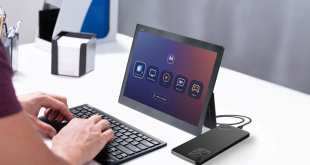In the wake of the record shattering StarCraft II launch, the relaunch of Duke Nukem, and Microsoft’s revival of key PC exclusive franchises at Gamescom last month, the UK IT trade has hailed the resurgent strength of PC gaming.
According to a recent report by the PC Gaming Alliance, annual shipment volumes for the PC gaming hardware market in 2009 were over two times larger than the combined Wii, PS2, PS3 and Xbox 360 console units shipped in the same period. The report also estimates the number of gaming PCs armed with discrete graphics cards to be $212.6 million for 2009, and expects this to grow to about $322 million by 2013.
Key firms from the UK trade have come out this month in support of the sector, which through graphics cards, peripherals, networking, cooling, and other high-end hardware, plays a significant role in the health of the entire industry.
“World of Warcraft boasts over 11.5 million subscribers and The Sims 2 has shipped over 13 million copies,” said Craig Gore, graphics cards, processors and Microsoft product manager at KMS Components. “PC gaming is far from dead, and with companies like Steam working hard to protect the intellectual property rights of game makers, the industry will continue to grow.”
VIP product manager Matthew Parrish added: “I don’t know who’s been saying PC gaming is dead but we’re certainly not seeing that in our sales figures. New games that push the limits of performance always stimulate hardware sales, which is why the launch of category A titles in the run-up to Christmas will boost graphics sales.”
Consoles have seen the bulk of marketing and attention from games publishers in recent years, though many claim this is not indicative of the demand for triple A PC titles. “PC gaming is massive and will continue to thrive. What we are seeing is development houses trying to control costs by focusing on gaming consoles which, naturally, use older hardware,” said Craig Connell, AMD’s regional sales manager for Northern Europe.
Bill Donnelly, Sapphire’s global PR director, added: “The console market appeals to casual gamers, who can just hook up to the TV and play at very reasonable cost – but the experience is way short of the latest high resolution, multi-screen solutions that can run on the PC to give a much more realistic and immersive experience. The PC with its ability to be upgraded and tuned up (overclocked) really is the platform of choice for the hardcore gamer.”
In the past, the death knell of PC gaming has been sparked by declining sales of box copy games. However, this doesn’t take into account the explosive increase in digitally downloaded titles. Currently it is impossible to track how many games are being sold digitally – but regulatory body ELSPA is trying to amend this with new charts designed to reflect the true state of PC games sales.
“We are on our way to the first ever publication of a digital distribution games chart. But this is only the start of the process that will, we hope, lead to a chart that includes data from all sectors of the market on both PC and console formats,” said Sam Collins, commercial manager at ELSPA.
When asked if digital distribution will strengthen the PC gaming platform, Collins added: “It is already and it will continue to do so. Digital distribution allows greater diversity of products delivered to a variety of PC based gaming platforms. PC as a games format is being reinvented.”
You can read Andrew Wooden’s blog entry about PC gaming here.
 PCR Tech and IT retail, distribution and vendor news
PCR Tech and IT retail, distribution and vendor news

